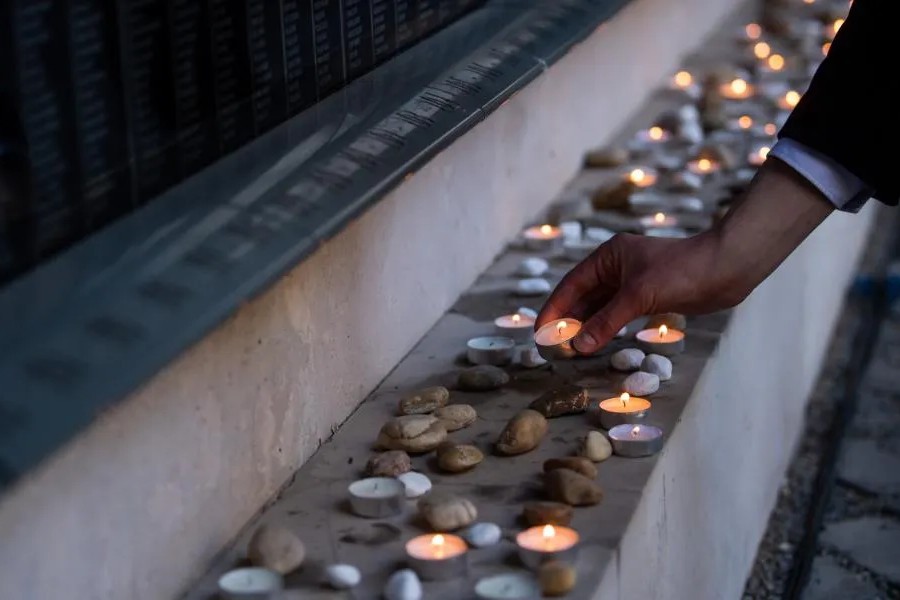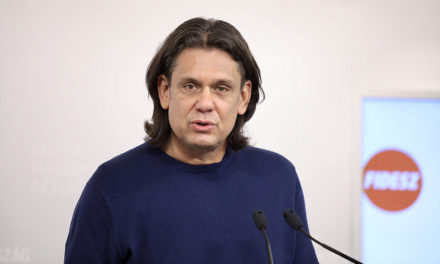The full equality of Hungarian Jews was achieved in 1867, the year of the Compromise. In 1895, the Jewish denomination was declared an established religion, i.e. recognized by the state, on an equal footing with other established religions.
After the First World War, on September 26, 1920, the National Assembly adopted the XXV of 1920, known as the numerus clausus. article of law, which stipulated that ethnic groups and nationalities living in the country cannot study at universities in a higher proportion than their share within the total population. The measure primarily affected the Jews.
On the threshold of the Second World War, on May 29, 1938, the first Jewish law came into force to ensure a more effective balance of social and economic life.
According to the legislation, no more than 20 percent of the members of the press, lawyers, engineers, and medical chambers, as well as business and commercial employees, could be of the Israelite religion. The second Jewish law on limiting the occupation of public and economic space by Jews, promulgated on May 5, 1939, classified as Jewish those whose at least one parent or at least two grandparents were Jewish, and they were banned from intellectual careers.
The Third Jewish Law, promulgated on August 18, 1941, "On Amendments to Marriage Law and Race Protection Provisions Related to Marriage" prohibited marriage between Jews and non-Jews and classified sexual relations between non-Jews and Jews outside of marriage as a racial insult. The National Defense Act of 1939 created the legal basis for the unarmed national defense labor service, later the labor service claimed the lives of tens of thousands of Jews.
The first mass slaughter of the Holocaust, which also involved Hungarian Jews, took place on August 27-28, 1941 in Kamenets-Podolsk, Ukraine.
where the German SS executed 23,000 Jews, the majority of whom were deported from Hungary, most of whom were stateless. After the German occupation of Hungary on March 19, 1944, the Sztójay government enacted a series of anti-Jewish laws, from the wearing of the yellow star to the delivery of bicycles to the use of Jewish apartments.
On April 28, 1944, the decree on ghettoization was published, according to which the Jews of smaller settlements were rounded up regardless of gender and age, and then transported to ghettos and concentration camps on the outskirts of a large city, while urban and Budapest Jews were crowded into fenced ghettos.
The ghettoization in Transcarpathia began before the publication of the decree, at dawn on April 16, 1944.
The measure was implemented throughout the country within a few weeks, and in Budapest, people classified as Jews were crowded into starred houses.
Mass deportations began on May 15, 1944. The German army led by Adolf Eichmann, with the cooperation of the Hungarian public administration and the gendarmerie, dragged 437,000 rural Jews to the death camps in a few months. Four trains per day, a total of 147 trains, left for Auschwitz.
The deportation of Budapest's Jews was stopped by Governor Miklós Horthy on July 6 due to international protests.
After the failed coup attempt on October 15, 1944, the Arrow Cross Party led by Ferenc Szálasi came to power. The newly appointed national leader renewed the deportations: in November and December, around 50,000 Jews from Budapest and laborers were taken to Germany, and most of them were driven to the west in a death march on foot. The Jews who remained in Budapest were locked up in two ghettos in November, and thousands of Jews were murdered by armed men with arrows.
Several diplomats and ecclesiastics tried to save the persecuted, including the Swedish Raoul Wallenberg, the Swiss Carl Lutz, the Italian Giorgio Perlasca and the papal nuncio Angelo Rotta. The survivors of the Budapest ghetto were liberated by the Allied troops on January 18, 1945, and the survivors of the concentration camps in the spring of 1945.
The 1941 census showed 725,000 Israelites in the country with an increased area after the revision steps. Two-thirds of them died as a result of labor service, deportations, and deliberate genocide.
Rural Jewry was practically completely destroyed, about 100,000 of those living in Budapest escaped.
Historians put the number of Hungarian Roma who died in concentration camps as victims of the Holocaust between 5,000 and 70,000. (The Gypsy Holocaust and the victims of the dust storm are commemorated on August 2 in Hungary.)
The opening of the Holocaust Memorial Center on Páva Street in Budapest on April 15, 2004 is connected to the Memorial Day. Commemorations are being held all over the country again this year, and on May 5, the March of Life will start again in Budapest, the participants of which will march from the synagogue on Dohány Street to the Keleti railway station, from where students will be set off with the "Train of Life", who will take part in the international march between Auschwitz and Birkenau the next day. .
MTI
Photo: MTI/Zoltán Balogh












